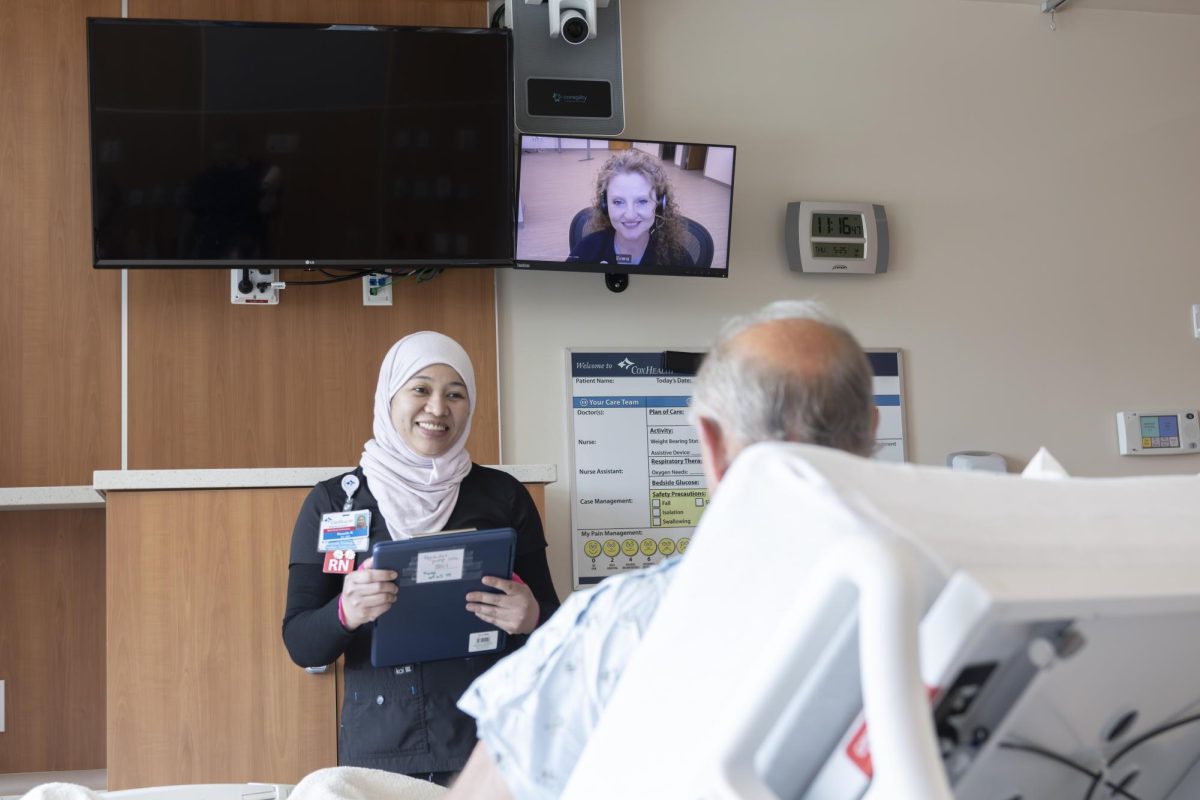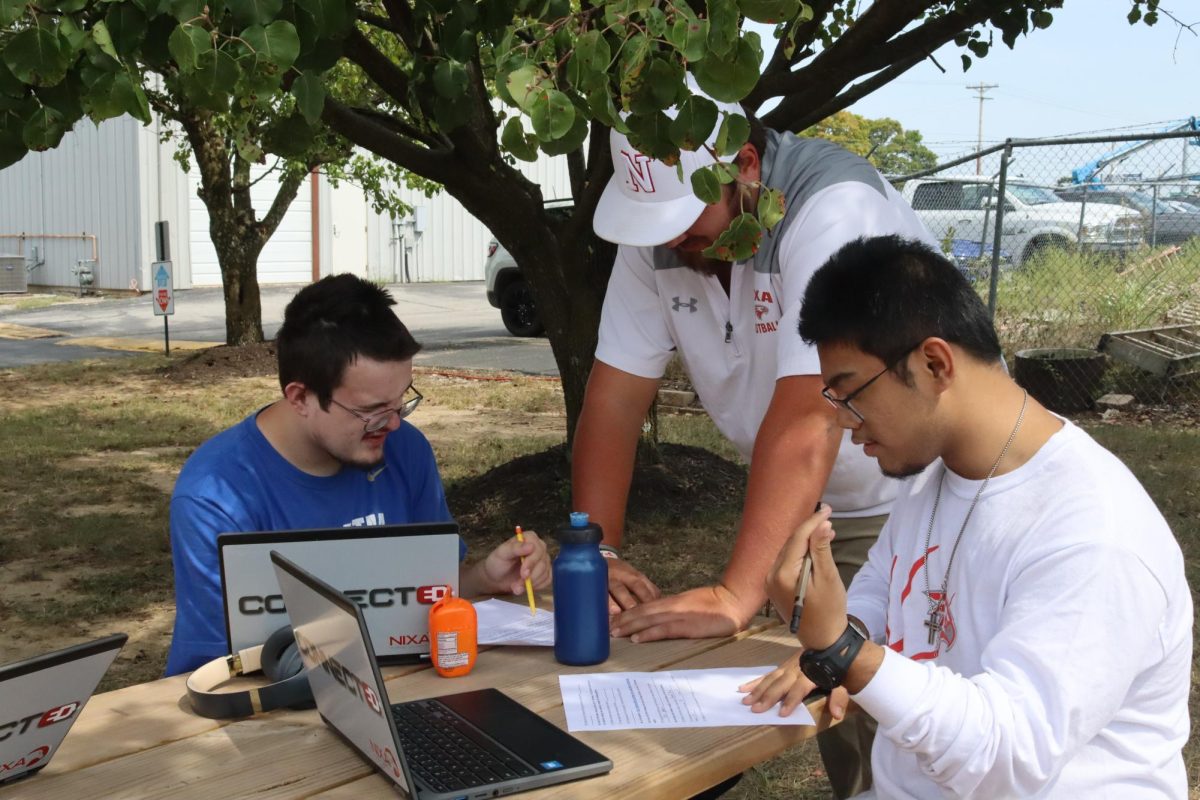the last few decades, healthcare in the United States has experienced significant changes. These technological, institutional and policy-based solutions have affected not only medical professionals but also the patients who rely on the system, bringing about improved access, new challenges and ongoing debates.
Kaylee Welch has witnessed the evolution of healthcare from inside the hospital room. As the nurse manager of the Virtual Care Command Center at CoxHealth, she has overseen one of the most vital shifts in hospital care in recent years.
“Even before COVID-19, we had predicted a nursing shortage due to the retirement of baby boomers,” Welch said. “As they age, they became more likely to have illnesses and comorbidities. That meant fewer nurses and more patients,”
With nurses leaving the workforce, patient volume increasing, and bedside care under pressure, Welch and her team began to consider different solutions.
CoxHealth Virtual Command Center is a system where doctors monitor patient vitals remotely to ensure the proper steps are taken to prevent infections and readmission.
“We can monitor patients with central lines or catheters and make sure they’re getting care that meets all protocols,” Welch said.
The command center also helps during the discharge process by providing patient education and scheduling follow-ups. Two crucial steps in reducing readmissions are attention to care, which is especially important for patients with complex conditions, who might be overwhelmed with instructions and managing new medications when leaving.
These innovative care solutions led the hospital to win the Innovation of the Year award. Despite this milestone, the program hasn’t been without challenges. Communication across multiple campuses, different technologies and reliance on text-based contact created initial friction. But Welch remains optimistic.
“We’re always refining our practices. The end goal is to help our floor nurses and the patients receiving care.”
Looking forward, Welch said she’s predicting more integration of artificial intelligence (AI), particularly in charting and health records. However, she maintains that Cox will continue to retain human connection.
“We are not using AI yet,” said Welch, “but I see large companies starting to embed it; it’s exciting and a little nerve-wracking.”
Taylor Anderson has spent the majority of her 20s in and out of hospital beds. Initially diagnosed with tachycardia, a condition that causes the heart to beat abnormally fast, she spent years dealing with severe symptoms.
“It was really rough,” She said. “Tachycardia alone can be debilitating, dizziness, shortness of breath, palpitations. It can even lead to heart failure or stroke.”
Eventually, her condition worsened into postural orthostatic tachycardia syndrome (POTS), a disorder affecting blood flow that often leaves her unable to walk.
Despite these challenges, she remains hopeful. A new POTS treatment center recently opened in Springfield, offering exercise-based therapy for patients with her condition.
“It’s not a cure,” Anderson said, “but it’s helping. They’ve found that the right exercise can make symptoms more manageable.”
Tools like the MyMercy app let her manage appointments quickly. And new discreet heart monitors allow her to track symptoms and transmit her heart’s electrical activity to her doctors instantly.
“My Mercy has this app where I can make or cancel appointments without calling; just a few taps and it’s done.”
However, for Kristopher Griese, advancements in healthcare hasn’t always meant healing.
Griese lives with ankylosing spondylitis, a chronic disease that causes his joints to swell, making it difficult or even impossible to complete certain tasks.
His frustrations lie not only in pain but in the systems meant to help him manage it. When he was on Medicaid, Griese was denied surgery multiple times.
“They would only pay for shots that prolonged the problem instead of solving it,” Griese said. “They said I was too young, but that shouldn’t matter if it’s the life-altering solution I need.”
Kristopher is unsure about the future of healthcare, believing the system is too focused on profit.
“Pharmaceutical companies are the biggest problem,” Griese said. “Doctors get paid to prescribe certain medications. And the medicine people actually need is overpriced.”
His experience reflects a broader reality that many people across the country share.
According to the Kaiser Family Foundation, about one in five adults, 21 percent, say they’ve skipped filling a prescription due to cost, while about one in ten report cutting pills in half or even skipping doses to make them last longer. Even insured adults are worried, with 48 percent reporting feeling stressed due to the affordability of monthly premiums, with many rating their plans poorly in terms of care.
Griese sees all of this as part of a deeper issue in America, believing these issues will be without solutions: “I don’t see that changing anytime soon either; it’s a system that’s been set up that way for decades.”
Categories:
Evolving Care
How technology and patient experience are affected by the healthcare system
Jaden Ezzo, Staff Writer
May 21, 2025
A Virtual care team member monitors patients remotely at the Coxhealth Care Command Center. “We are helping the nurses do tasks… so they can be in the rooms with their patients more and less time at the computer,” said Kaylee Welch.
0








